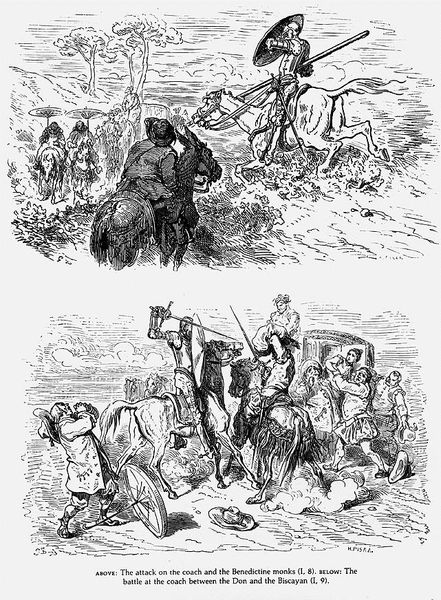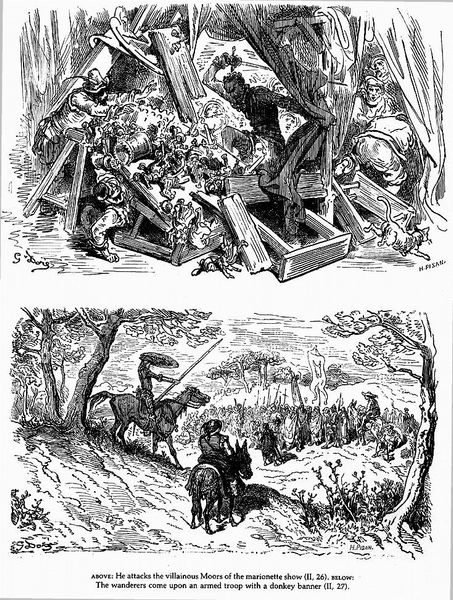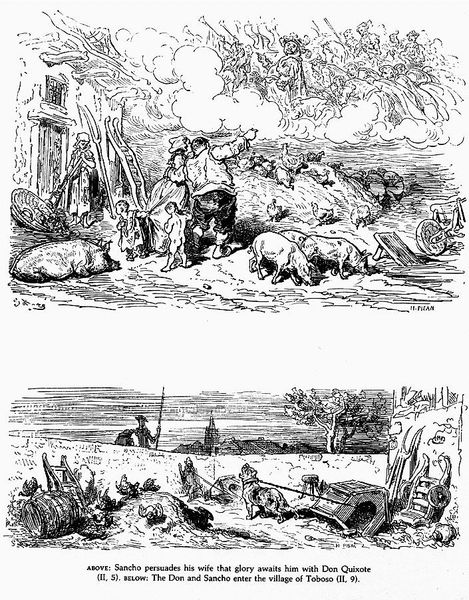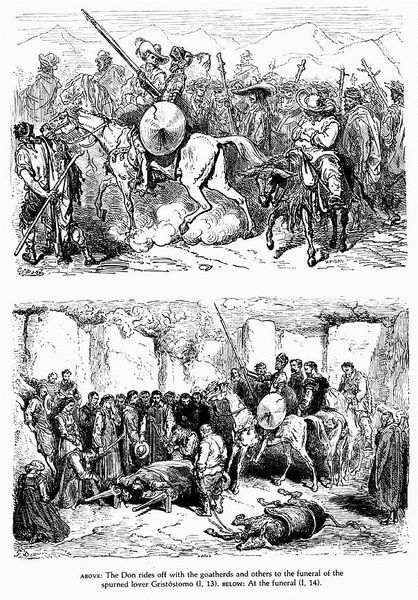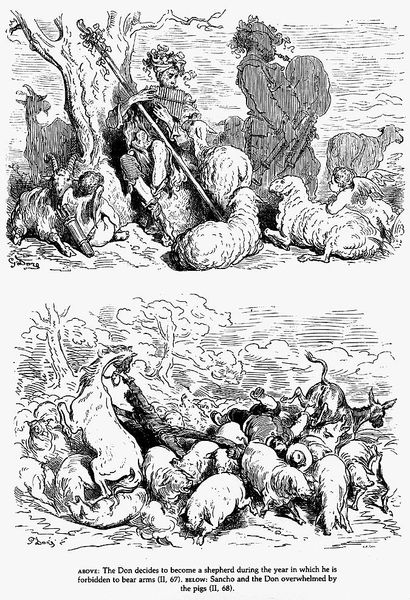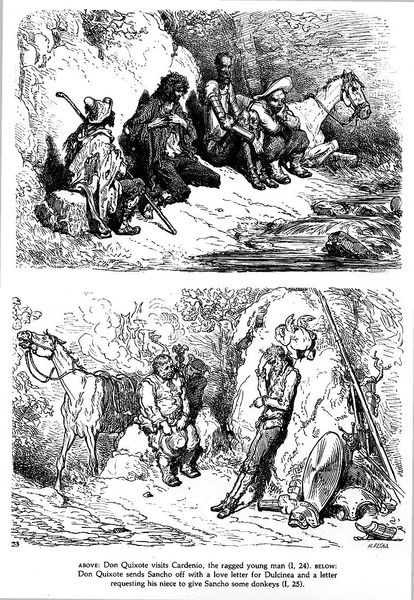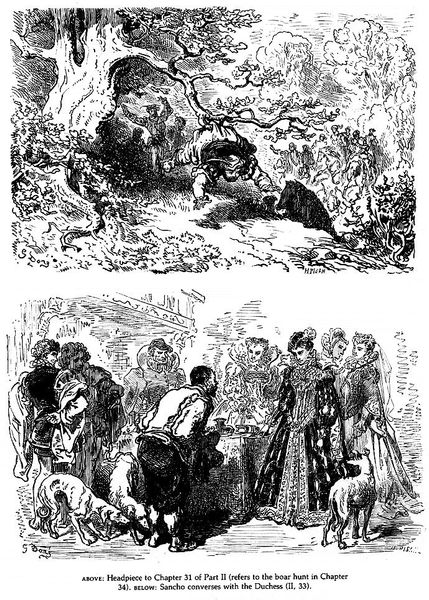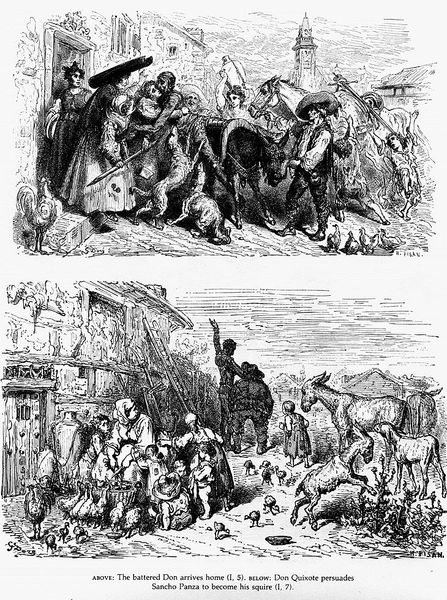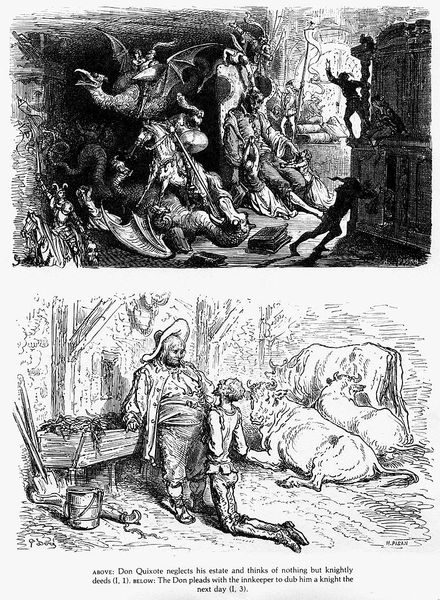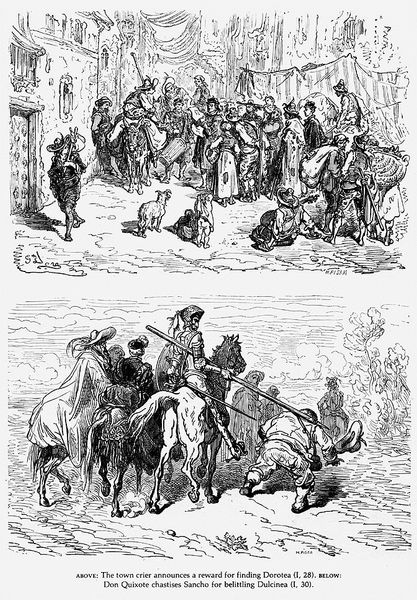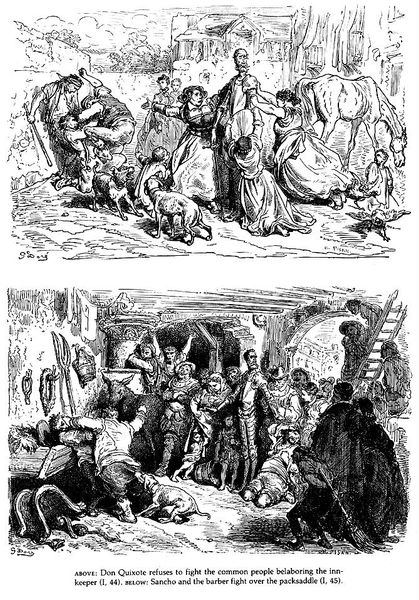
drawing, ink, pen
#
drawing
#
narrative-art
#
comic strip
#
animal
#
pen illustration
#
grass
#
landscape
#
figuration
#
ink
#
plant
#
comic
#
horse
#
pen
#
botany
Copyright: Public domain
Gustave Dore's "Don Quixote" is a masterful example of 19th-century printmaking, likely executed as a wood engraving or etching. The stark contrast achieved through precise mark-making is central to the image's appeal. This artwork, made for mass distribution, reflects the burgeoning print culture of the time. Engravings like this one required skilled artisans to translate Dore's designs onto printing blocks, a labor-intensive process essential for disseminating literature to a wider audience. The sharp, graphic quality of the lines, is a direct result of the engraver’s careful work with specialized tools like burins. The medium itself is deeply embedded in the social context, as books such as Don Quixote became increasingly accessible to a growing middle class hungry for literature and visual storytelling. By understanding the means of production, we can appreciate how this image played a role in shaping cultural narratives.
Comments
No comments
Be the first to comment and join the conversation on the ultimate creative platform.
